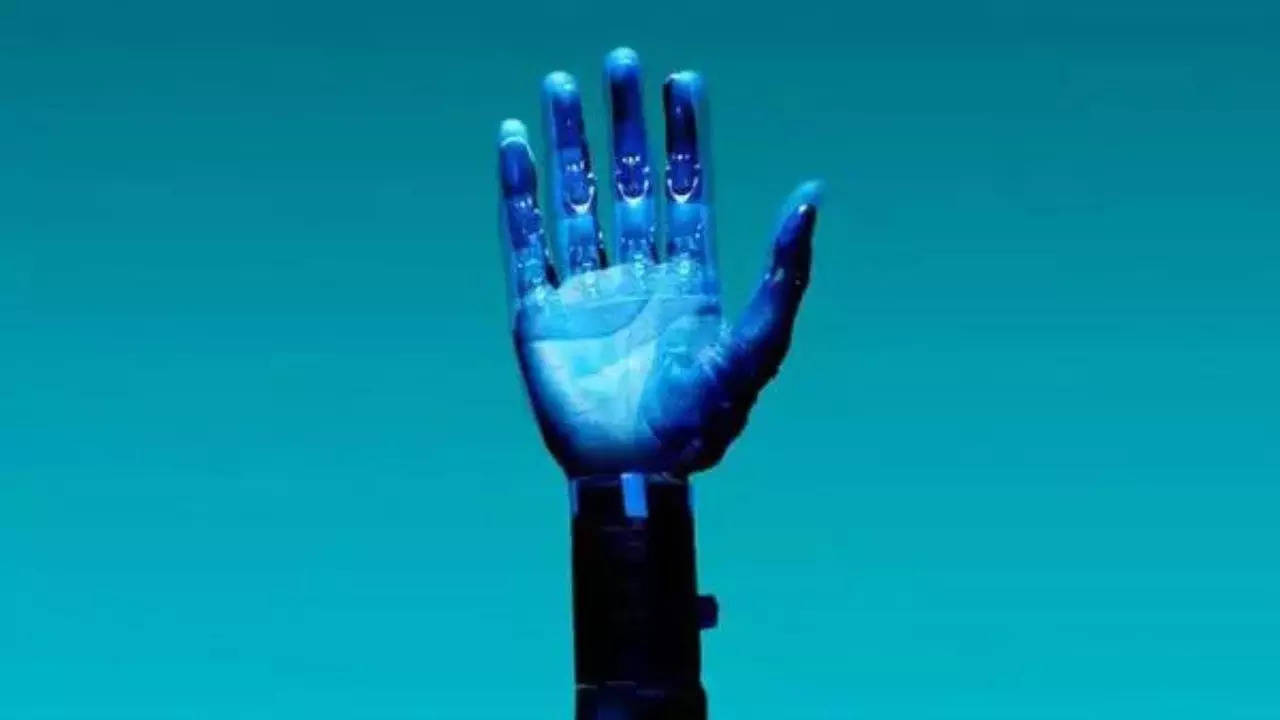CALIFORNIA: Actuators, which transform electrical energy into motion or force, serve an important role in everyday life that is often overlooked.
Soft material-based actuators, in particular, have gotten a lot of attention in the scientific community in recent years because of their lightweight, quiet operation, and biodegradability.
A simple method for developing soft actuators is to use multi-material structures, such as “pockets” formed of flexible plastic films filled with oils and covered with conductive plastics.When electrically activated, the film displaces the fluid and contracts the pocket, much like a biological muscle.
This technique can be used to create robot muscles, changeable optics, and tactile surfaces. However, until today, continual electrical stimulation only allowed for short-term muscular contractions, posing a considerable practical barrier.
The study was published research in Nature Electronics.
Researcher Ion-Dan Sirbu from Scuola Superiore Sant’Anna, formerly a doctoral student at the University of Trento under the supervision of Giacomo Moretti and Marco Fontana, began investigating this phenomenon during a research period at Johannes Kepler University in Linz.
Together with the Austrian research group, Ion-Dan Sirbu developed a system that enables accurate force measurement in these actuators.
“During my research on common material combinations,” Ion-Dan Sirbu explained, “I also experimented with a plastic film that a fellow doctoral student, David Preninger, used for his work on biodegradable artificial muscles. As soon as we noticed that this material can sustain a constant force for arbitrarily long periods, we realized we had made a significant discovery.”
Since then, the team has worked on a theoretical model and conducted in-depth material characterizations. It became apparent that the key experimental results could be accurately described using simple models.
“The beauty of our model is its simplicity and that it is not limited to existing actuators. We believe our results will provide the scientific community with a simple yet powerful tool for designing and investigating new systems,” said David Preninger, co-first author of the paper and PhD-student at the Soft Matter Physics department at Johannes Kepler University.
“What’s interesting is that not only have we made this technology more functional, but our study enables the identification of material combinations that bring up to thousandfold energy consumption reductions” adds Prof Kaltenbrunner.
Utilizing the identified material combinations, scientists have successfully developed and operated various types of artificial muscles, variable gradient optics, and tactile displays.
Prof Fontana emphasized, “Understanding the fundamental mechanisms underlying soft actuators as established by this study has the potential to make a significant leap in the field of assistive devices, automatic machines, and mobile robots for terrestrial, marine, and space exploration. All these sectors are in search of low-cost, high-performance solutions, which shall also be capable of ensuring low consumption and environmental impacts for sustainability.”
Soft material-based actuators, in particular, have gotten a lot of attention in the scientific community in recent years because of their lightweight, quiet operation, and biodegradability.
A simple method for developing soft actuators is to use multi-material structures, such as “pockets” formed of flexible plastic films filled with oils and covered with conductive plastics.When electrically activated, the film displaces the fluid and contracts the pocket, much like a biological muscle.
This technique can be used to create robot muscles, changeable optics, and tactile surfaces. However, until today, continual electrical stimulation only allowed for short-term muscular contractions, posing a considerable practical barrier.
The study was published research in Nature Electronics.
Researcher Ion-Dan Sirbu from Scuola Superiore Sant’Anna, formerly a doctoral student at the University of Trento under the supervision of Giacomo Moretti and Marco Fontana, began investigating this phenomenon during a research period at Johannes Kepler University in Linz.
Together with the Austrian research group, Ion-Dan Sirbu developed a system that enables accurate force measurement in these actuators.
“During my research on common material combinations,” Ion-Dan Sirbu explained, “I also experimented with a plastic film that a fellow doctoral student, David Preninger, used for his work on biodegradable artificial muscles. As soon as we noticed that this material can sustain a constant force for arbitrarily long periods, we realized we had made a significant discovery.”
Since then, the team has worked on a theoretical model and conducted in-depth material characterizations. It became apparent that the key experimental results could be accurately described using simple models.
“The beauty of our model is its simplicity and that it is not limited to existing actuators. We believe our results will provide the scientific community with a simple yet powerful tool for designing and investigating new systems,” said David Preninger, co-first author of the paper and PhD-student at the Soft Matter Physics department at Johannes Kepler University.
“What’s interesting is that not only have we made this technology more functional, but our study enables the identification of material combinations that bring up to thousandfold energy consumption reductions” adds Prof Kaltenbrunner.
Utilizing the identified material combinations, scientists have successfully developed and operated various types of artificial muscles, variable gradient optics, and tactile displays.
Prof Fontana emphasized, “Understanding the fundamental mechanisms underlying soft actuators as established by this study has the potential to make a significant leap in the field of assistive devices, automatic machines, and mobile robots for terrestrial, marine, and space exploration. All these sectors are in search of low-cost, high-performance solutions, which shall also be capable of ensuring low consumption and environmental impacts for sustainability.”
Denial of responsibility! Swift Telecast is an automatic aggregator of the all world’s media. In each content, the hyperlink to the primary source is specified. All trademarks belong to their rightful owners, all materials to their authors. If you are the owner of the content and do not want us to publish your materials, please contact us by email – swifttelecast.com. The content will be deleted within 24 hours.


